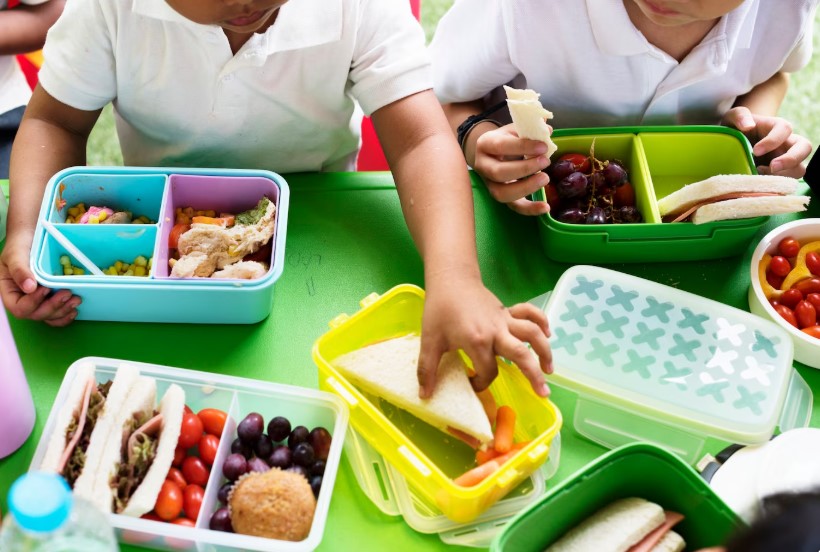5 Essential Facts About the School Lunch Program USA: What Every Parent and Educator Should Know

Introduction
The School Lunch Program USA is one of the most far-reaching and impactful initiatives aimed at supporting student health and academic success. Established to ensure that every child has access to nutritious meals during the school day, this federal program touches the lives of millions of students across the country every single day. Yet despite its scale and importance, many parents, educators, and even students are unfamiliar with how it works, who qualifies, and why it matters.
In this article, we’ll explore five essential facts about the School Lunch Program USA, shedding light on its history, funding, nutritional standards, and the vital role it plays in promoting child development and food security.
1. The School Lunch Program USA Has Served Students Since 1946
The National School Lunch Program (NSLP), known more broadly today as the School Lunch Program USA, was established in 1946 under President Harry S. Truman. The motivation behind its creation was twofold: to combat malnutrition among children and to stabilize food prices by using surplus agricultural products.
What began as a modest initiative has now grown into a robust program that serves nearly 30 million students each day, making it one of the largest child nutrition efforts in the world. Administered by the U.S. Department of Agriculture (USDA), the program partners with state agencies and individual school districts to provide meals that meet federally regulated nutritional guidelines.
2. The Program Is Funded Through Federal and State Contributions
The School Lunch Program USA is primarily federally funded, though state and local governments often contribute additional resources. Schools that participate in the program receive cash reimbursements and food commodities from the USDA for each meal they serve that meets established nutrition standards.
Here’s how the funding typically breaks down:
Free Meals: Provided at no cost to students from households at or below 130% of the federal poverty level.
Reduced-Price Meals: Offered to students from households between 130% and 185% of the poverty level. Families pay a small portion, usually no more than $0.40 per lunch.
Paid Meals: Even students not qualifying for assistance benefit from USDA subsidies, which help keep lunch prices affordable.
Importantly, schools must meet strict meal pattern requirements to qualify for reimbursements, ensuring a baseline of nutritional quality across the country.
3. Meals Must Meet Strict Nutritional Standards
One of the most significant developments in the School Lunch Program USA came with the Healthy, Hunger-Free Kids Act of 2010. This legislation, championed by then-First Lady Michelle Obama, updated meal standards to better align with the latest dietary guidelines.
Today’s school lunches are required to include:
Fruits and Vegetables: With a mandate for a variety of vegetables throughout the week, including dark green, red/orange, legumes, and starchy types.
Whole Grains: At least 80% of all grain items served must be whole grain-rich.
Lean Protein and Low-Fat Dairy: Meals include meat or meat alternatives and low-fat (1%) or fat-free milk.
Calorie Limits: Set by age group to prevent overfeeding or underfeeding.
Reduced Sodium, Saturated Fat, and No Trans Fat
These standards help promote healthier eating habits from a young age, which research shows can lead to better academic outcomes and long-term wellness.
4. The Program Tackles Childhood Hunger and Food Insecurity
Beyond offering a midday meal, the School Lunch Program USA plays a critical role in the fight against childhood hunger. According to the USDA, more than 11 million children in the U.S. live in food-insecure households, meaning they lack consistent access to enough food for a healthy lifestyle.
For many children, the school lunch is the most substantial or only nutritious meal they receive all day. Studies have shown that participation in the school lunch program is linked to:
- Improved academic performance
- Higher attendance rates
- Fewer behavioral problems
- Better overall physical and mental health
By ensuring that children are well-fed, the program supports not just individual students, but also the broader goals of educational equity and public health.
5. The Program Is Evolving With Technology and Innovation
The School Lunch Program USA has not remained stagnant. Over the years, it has adapted to meet the needs of modern families and changing times.
Here are a few ways the program continues to innovate:
Digital Ordering Systems: Many districts now use school lunch ordering systems that let parents pre-select meals, pay online, and track what their child eats.
Farm-to-School Initiatives: Schools are increasingly sourcing fresh, local ingredients to support local agriculture and provide more nutritious meals.
Cultural Inclusivity: More menus reflect the diverse backgrounds of students, offering halal, vegetarian, and culturally relevant dishes.
Sustainability: Programs are being developed to reduce food waste and use compostable trays and utensils.
Pandemic Response: During COVID-19, the USDA issued waivers that allowed schools to offer grab-and-go meals and extend free meals to all students, showcasing the program’s ability to pivot quickly in a crisis.
These improvements reflect a broader commitment to not just feeding kids—but feeding them well.
Bonus Fact: The School Lunch Program Goes Beyond Lunch
While the School Lunch Program USA is primarily known for providing lunch, it often works in tandem with other USDA meal programs to serve students before and after school, during weekends, and even through the summer. These include:
School Breakfast Program
Afterschool Snack Program
Summer Food Service Program (SFSP)
By layering these efforts, the USDA ensures that children have access to meals throughout the year, even when school is not in session.
Final Thoughts
The School Lunch Program USA is more than just a cafeteria service—it's a vital part of the nation's education and public health system. It provides essential nutrition to millions of students, helps close the opportunity gap, and continues to evolve to meet the demands of a modern world.
Understanding how the program works helps parents make informed decisions, encourages communities to advocate for better policies, and ensures that every child has a fair shot at success—starting with a healthy meal.
Whether you're a parent, teacher, school administrator, or simply someone who cares about kids, knowing these five essential facts about the School Lunch Program USA gives you a deeper appreciation for one of the country’s most impactful and unsung programs.
Note: IndiBlogHub features both user-submitted and editorial content. We do not verify third-party contributions. Read our Disclaimer and Privacy Policyfor details.







